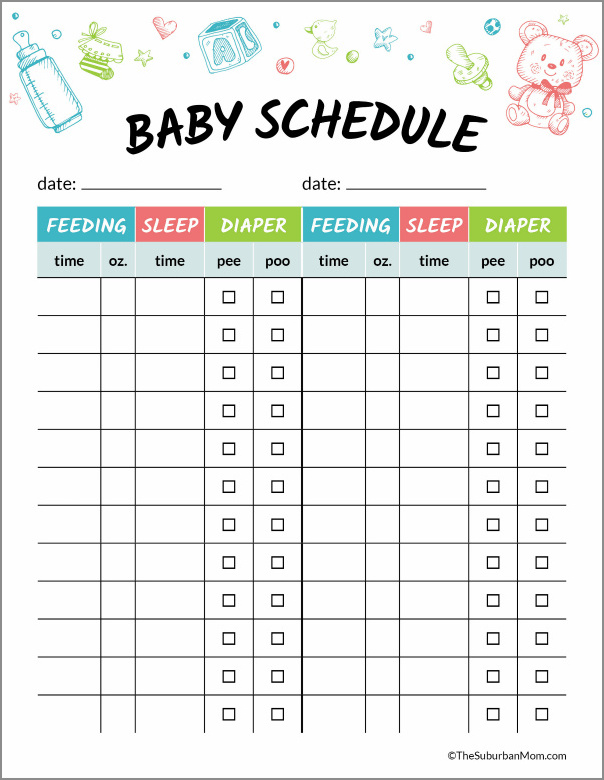As a new parent, one of the most important tasks you’ll face is establishing a feeding schedule for your infant. A well-planned feeding schedule ensures that your baby receives the necessary nutrition, helps regulate their sleep patterns, and provides a sense of routine for both you and your little one.
In this comprehensive guide, we’ll walk you through all the essential aspects of creating an infant feeding schedule, from understanding your baby’s nutritional needs to establishing a consistent routine that works for both of you.
Understanding Your Baby’s Nutritional Needs
Before diving into the details of creating a feeding schedule, it’s crucial to have a solid understanding of your baby’s nutritional needs. Infants have specific dietary requirements that vary depending on their age and stage of development.
1. Breast Milk or Formula: The foundation of your baby’s diet will be breast milk or formula. Breast milk is recommended as the primary source of nutrition for infants up to six months old, as it provides essential antibodies and nutrients. If breastfeeding is not an option, consult with your pediatrician to choose an appropriate formula.
2. Introducing Solid Foods: Around six months of age, you can begin introducing solid foods alongside breast milk or formula. Start with single-ingredient purees, such as mashed bananas or sweet potatoes, and gradually add more variety to their diet.
3. Allergenic Foods: It’s important to introduce allergenic foods, such as peanuts and eggs, to your baby’s diet early on to reduce the risk of developing allergies. Discuss this with your pediatrician before introducing these foods.
Establishing a Feeding Routine
Now that you have a basic understanding of your baby’s nutritional needs, let’s delve into the steps to create a feeding schedule that works for you and your little one.
1. Feed on Demand: During the first few weeks of your baby’s life, it’s best to feed on demand rather than adhering to a strict schedule. Newborns have small stomachs and need to eat frequently, usually every two to three hours.
2. Observe Hunger Cues: Watch for hunger cues, such as rooting, sucking on fists, or smacking lips. These signals indicate that your baby is ready to eat.
3. Create a Flexible Schedule: As your baby grows, you can start introducing a more structured feeding schedule. Aim for feeding every three to four hours during the day, with shorter intervals at night.
4. Follow Your Baby’s Lead: Every baby is unique, and their feeding needs may vary. Pay attention to your baby’s cues and adjust the schedule accordingly. Some babies may prefer smaller, more frequent feedings, while others may take larger volumes at longer intervals.
Sample Infant Feeding Schedule
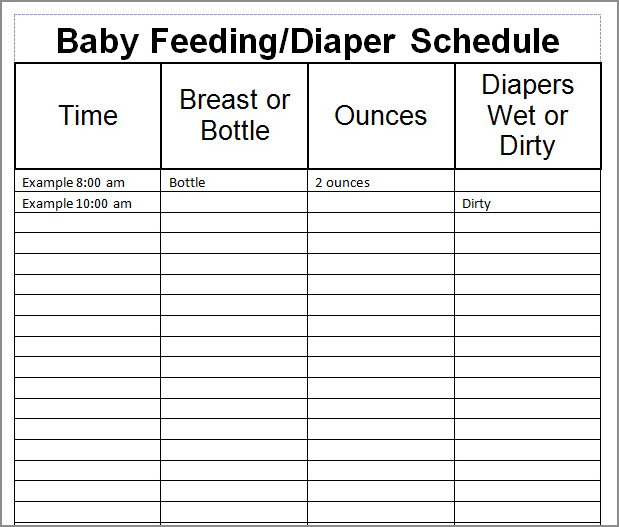
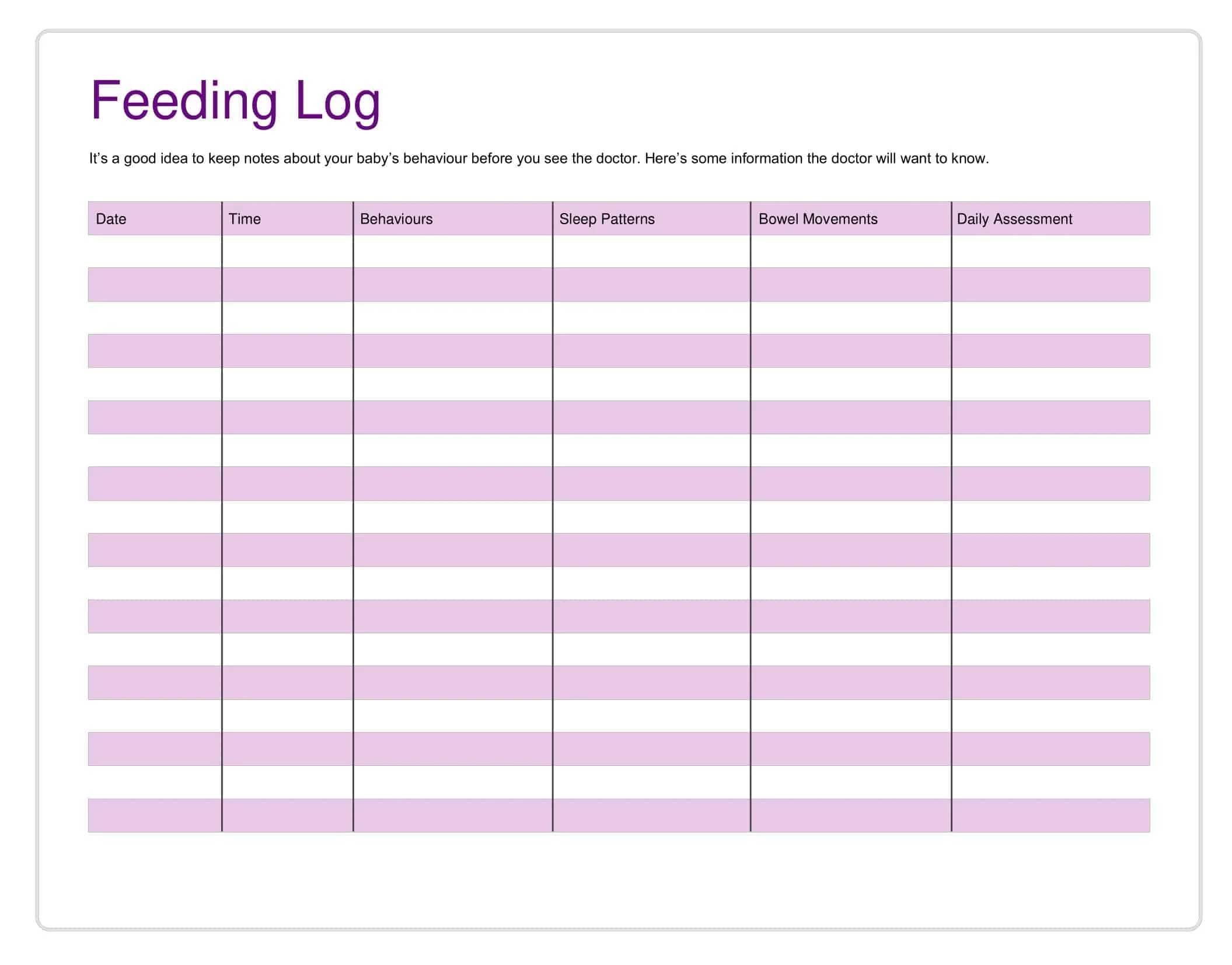
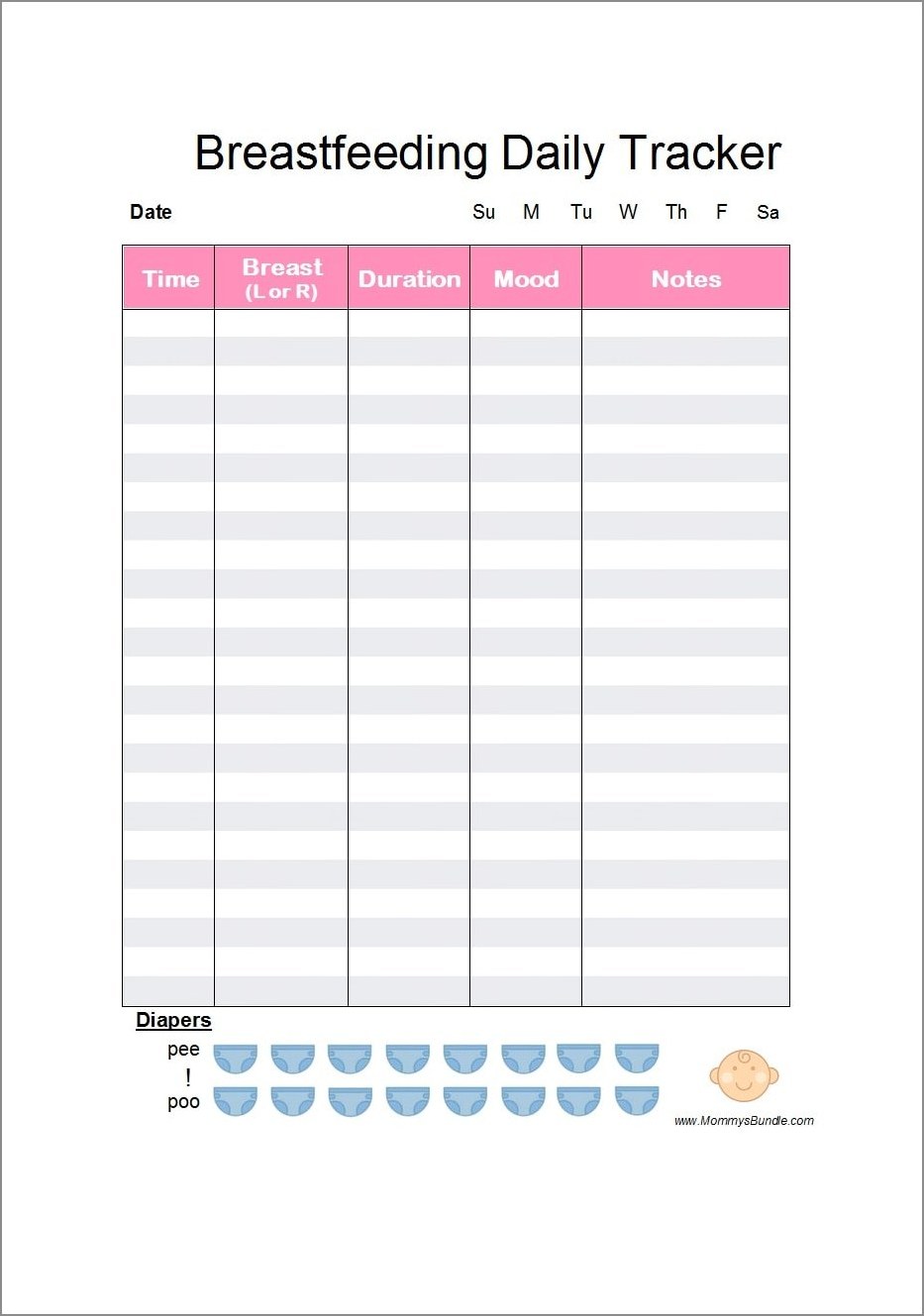
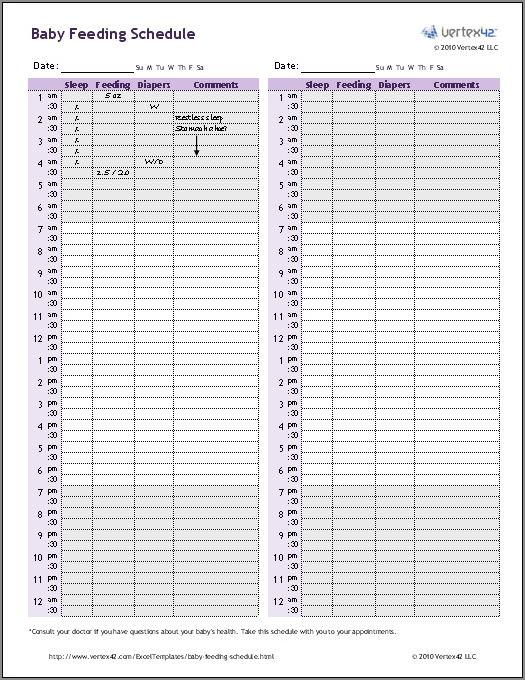
While it’s important to tailor the feeding schedule to your baby’s needs, here’s a sample schedule that can serve as a starting point:
- 6:00 am: Wake up and feed
- 7:30 am: Morning nap
- 9:00 am: Feed
- 10:30 am: Playtime
- 12:00 pm: Feed
- 1:30 pm: Afternoon nap
- 3:00 pm: Feed
- 4:30 pm: Outdoor activity
- 6:00 pm: Feed
- 7:30 pm: Bedtime routine
- 8:00 pm: Bedtime
- 10:00 pm: Dream feed
- 3:00 am: Night feed
Tips for Successful Feeding
Here are some additional tips to ensure successful and stress-free feeding sessions:
- Establish a Relaxing Environment: Find a quiet, comfortable space for feeding to minimize distractions and create a calming atmosphere.
- Practice Skin-to-Skin Contact: Skin-to-skin contact during feeding promotes bonding and helps regulate your baby’s body temperature and heart rate.
- Burp Your Baby: Burping your baby after feeding can help prevent discomfort and reduce the likelihood of spit-up or reflux.
- Monitor Your Baby’s Weight: Regularly track your baby’s weight gain to ensure they are receiving adequate nutrition. Consult your pediatrician if you have concerns about their growth.
- Stay Hydrated: Remember to drink plenty of fluids, especially if you are breastfeeding, as dehydration can affect milk production.
- Ask for Support: Don’t hesitate to seek help from a lactation consultant or pediatrician if you encounter difficulties with breastfeeding or have concerns about your baby’s feeding.
Conclusion
Creating an infant feeding schedule is an essential part of caring for your baby. Remember that each baby is unique, and it may take time to establish a routine that works for both of you. Be flexible, listen to your baby’s cues, and seek guidance from healthcare professionals when needed. With patience and practice, you’ll find a feeding schedule that promotes your baby’s growth and well-being while fostering a sense of comfort and security.
Infant Feeding Schedule Template – Download
